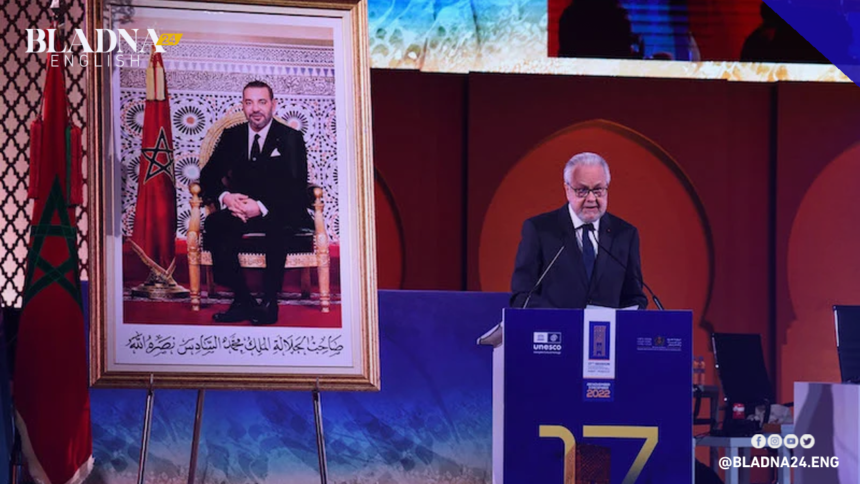King Mohammed VI announced the establishment of the National Center for Intangible Cultural Heritage, where the mission of the Center is to celebrate achievements in this field and to continue the systematic mapping of national heritage in different regions of the Kingdom.
This last was stated in a letter to the 17th session of the Intergovernmental Commission for the Safeguarding of the Intangible Cultural Heritage hosted by UNESCO this morning in Rabat.
The Royal Letter states that one of the Center’s missions is also to “complete a special national database, organize scientific and academic training, promote youth education, and promote cultural heritage. », added that the aim is to preserve Morocco’s World Heritage elements and prepare a Moroccan nomination file.
This comes as Rabat participates in the 17th session of UNESCO’s Intergovernmental Commission on the Safeguarding of the Intangible Cultural Heritage, which will take place from 28 November to 3 December.
Sessions have chosen the capital of the Kingdom, known for its rich cultural heritage spanning centuries, to host the most important international event dedicated to the intangible heritage of mankind.
Morocco will chair this annual meeting, The Annual General Assembly will be attended by representatives of States Parties, non-governmental organizations, cultural institutions and events from around the world on behalf of Ambassador Samir Al-Dar, Morocco’s Permanent Representative to the United Nations. Educational, scientific and cultural institutions.
According to UNESCO, Morocco was not chosen by chance to host this major event, but The Kingdom “has already played an active role in the adoption of the 2003 Convention for the Safeguarding of the Intangible Cultural Heritage, prior to its ratification, and actively participated in the drafting of the Convention prior to its adoption.”
UNESCO noted that Morocco has twelve elements on the lists of the 2003 Convention, highlighting that of these 12, Morocco is one of three multinational files with an important number of countries in the region: “Date palm: knowledge, skills, traditions and practices”, “Arabic calligraphy: knowledge, skills and practices” and “Knowledge, experience and practices related to the production and consumption of couscous.”
The Convention for the Safeguarding of Intangible Cultural Heritage is a UNESCO treaty that was adopted by the United Nations General Assembly on October 17, 2003, and came into force in 2006.
The purpose of the Convention is to ensure the protection of the intangible cultural heritage, to respect the intangible cultural heritage of the communities, groups and individuals concerned, and to raise awareness of the importance of the intangible cultural heritage at local, national and international levels. To promote mutual assessment and international cooperation and support in this regard.







